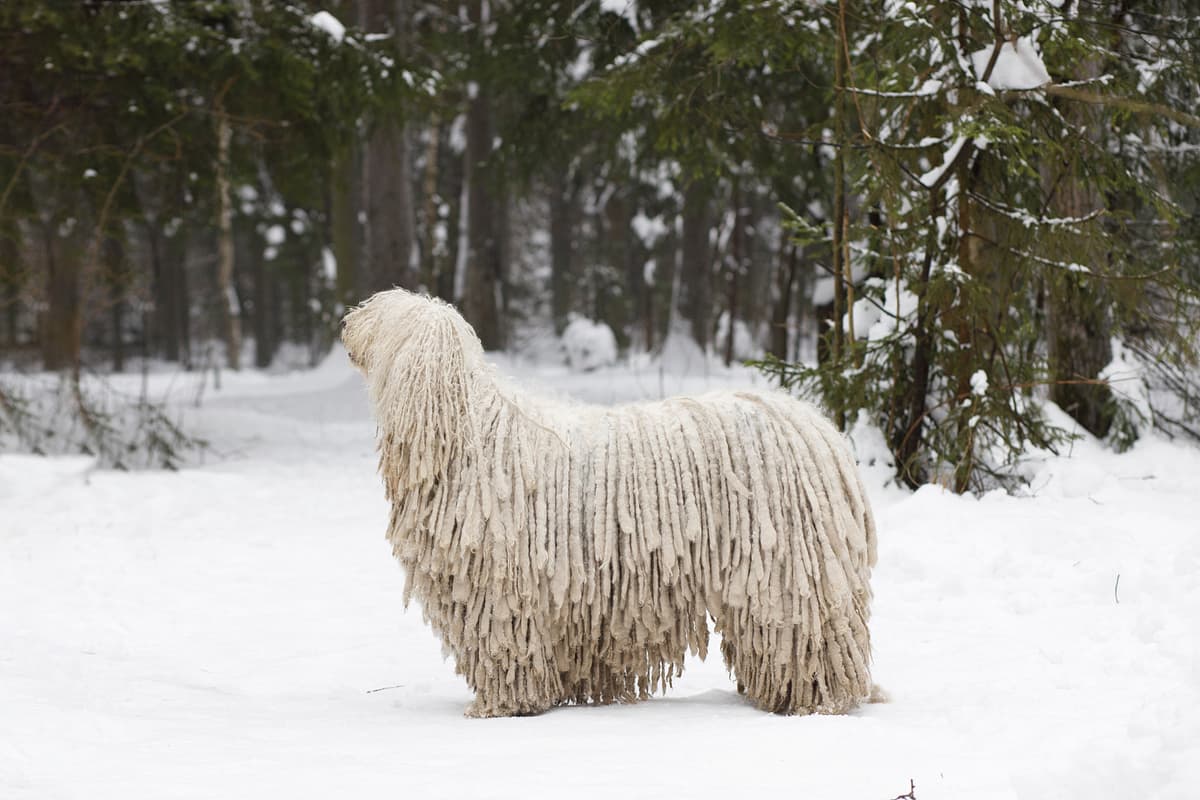Komondor vs Labrador Retriever
Discover the differences between Komondor and Labrador Retriever to make the best choice for your situation.
Try different breeds

Komondor
A loyal guardian with a striking corded coat and calm demeanor. Protective yet gentle, this breed thrives as a devoted family companion and vigilant watchdog.

Labrador Retriever
Eager, friendly, and intelligent, this breed loves being part of an active family. Their gentle nature and loyalty make them outstanding companions for all ages.
Quick comparison
Large
50–61 kg
Corded, dense
10–12 years
36–50 kg
Moderately active
Large
29–36 kg
Short double coat, water-resistant
10–12 years
25–32 kg
High energy
Personality & behavior
Compare the personality traits and behavioral characteristics of both breeds.
Komondor
Reserved with strangers, loyal to family
Quick learner, independent decision-maker
Moderate activity, enjoys purposeful exercise
Not particularly playful, prefers working roles
Adapts slowly, prefers familiar routines
Labrador Retriever
Warm and sociable with people and animals
Quick learner, responds well to training
High stamina, enjoys active pursuits daily
Loves games and interactive activities
Adjusts easily to new situations and environments
Care needs
Exercise, grooming, and daily care requirements
Komondor
Hip dysplasia, entropion
Labrador Retriever
Hip dysplasia, elbow dysplasia
Suitability
How well each breed fits different living situations and families
Komondor
Challenging for beginners
Requires confident, experienced handler due to independence and guarding instincts
Not apartment friendly
Needs space and can be vocal, making apartments less suitable
Moderately suitable
Enjoys activity but prefers purposeful tasks over constant play
Needs supervision
Protective nature may overwhelm small children without proper socialization
Potentially territorial
May not tolerate unfamiliar pets unless raised together early
Poorly suited
Suffers from separation anxiety and may become destructive if left alone too long
Labrador Retriever
Great choice
Patient and eager to please, Labradors are manageable for most first-time owners.
Not ideal
Labradors need space and exercise, so apartments can limit their activity needs.
Perfect fit
High energy and stamina make them excellent for active individuals or families.
Highly suitable
Gentle temperament and playful nature make them safe and loving with young children.
Very friendly
Generally sociable and get along well with other dogs and pets.
Prone to anxiety
Extended alone time can lead to boredom and destructive behaviors in this breed.
Breed strengths
What each breed excels at and their best qualities
Komondor
- Excellent livestock guardian instincts
- Loyal and protective with family
- Highly intelligent and observant
- Low shedding due to corded coat
- Strong territorial awareness and alertness
Labrador Retriever
- Friendly and sociable with people and dogs
- Highly trainable and eager to please
- Excellent with children and families
- Strong retrieving and swimming abilities
- Generally adaptable to various living situations
Challenges & considerations
Potential challenges and considerations for each breed
Komondor
- Requires extensive coat maintenance and grooming
- Can be wary of strangers and visitors
- Needs consistent early socialization
- Not suited for apartment or urban living
- May show stubbornness during training sessions
Labrador Retriever
- Prone to obesity without portion control
- Can become destructive if under-exercised
- Heavy seasonal shedding requires regular grooming
- May develop hip or elbow dysplasia
- Needs significant daily physical activity
Ready to choose your perfect breed?
Learn more about each breed or compare other breeds to find the perfect match for your lifestyle.
Discover more helpful tools
Make use of our other free tools to get the most out of your pet experience
